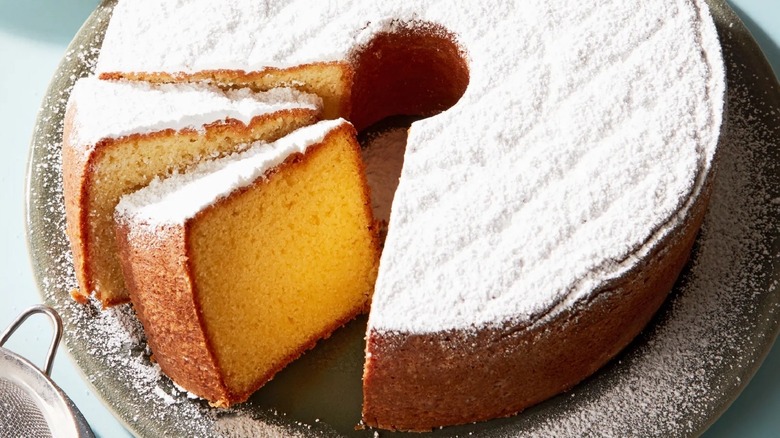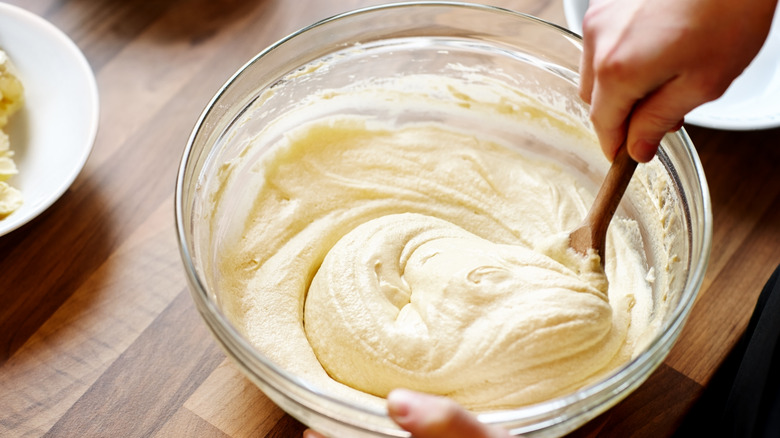Reverse Creaming Is The Key To A Perfectly Authentic Philly Fluff Cake
If you're looking for the ultimate buttery cake recipe, now might be the time to become acquainted with the Philly fluff cake. Named for its rich secret ingredient — Philadelphia cream cheese — the cake offers an extremely tender and fluffy interior with a crisp exterior. Covered in a final snowy coat of powdered sugar, this dessert has gained much fanfare after debuting at Jewish bakeries in New Jersey and New York in the 1940s.
Much of the cake's heralded texture comes from a trio of rich, fatty ingredients — cream cheese, butter, and vegetable shortening — and the way these fats are incorporated into the batter. While the butter and cream cheese bring plenty of flavor and moisture to the cake, as they do for pound cakes, the addition of shortening gives Philly fluff that signature fluffy texture while also extending its shelf life. But the main secret to this cake is its use of the reverse creaming method, a favorite way to make cake batter for bakers in the know.
Also known as the paste method, reverse creaming calls for beating the fat into the flour, sugar, and other dry ingredients before adding in the liquid. It may feel counterintuitive, but this method creates a batter that is more thoroughly emulsified without the risk of over-mixing, making a finer, more tender crumb than average. And if you're making your own Philly fluff cake at home, you'll want to use this method for an authentically fluffy result.
The method behind the legendary cake
Before you reach for your mixer, check the temperature of your fats. For the reverse creaming method, the temperature of your butter is very important to yield the best results. Softened or room temperature butter, cream cheese, and vegetable shortening are needed to properly incorporate the butter into the dry ingredients — if they're too cold, it'll be difficult to break them up and make a smooth mix. This is especially true for Philly fluff cake, which has three different fats that all have different consistencies when cold. At the right temp, everything should easily whip into a creamy spread before you need to add the other ingredients.
Next, you'll add in your dry ingredients, mixing slowly at first (so as not to cause a mess) and increasing the speed after the fat is properly coated in flour, continuing to mix until a smooth paste forms (hence the term "paste method"). The last step is beating in the liquid ingredients, like eggs and vanilla extract. Just like that, you've made a cake batter that's finely mixed and cohesive, yet not over-beaten enough to create a tough texture. All that's left is to bake it — and once cooled, coat it with powdered sugar — and you're left with a sturdy yet finely-crumbed cake worth the cult fascination.

